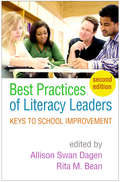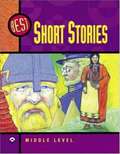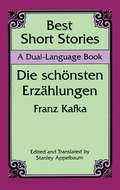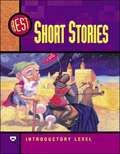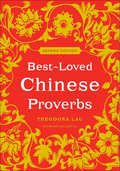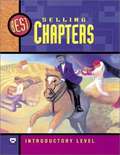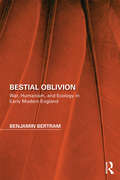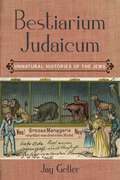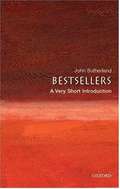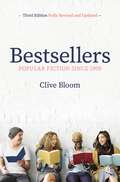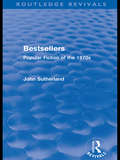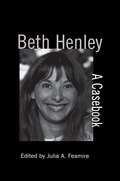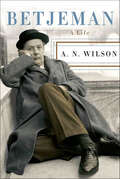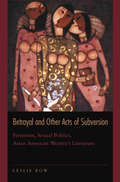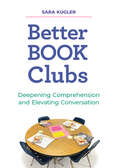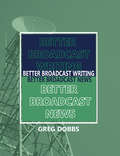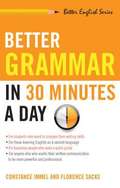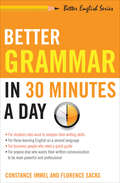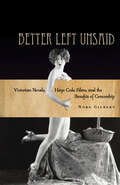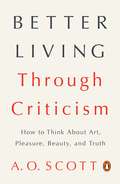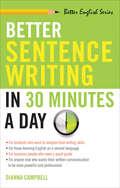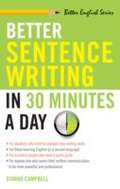- Table View
- List View
Best Practices of Literacy Leaders, Second Edition: Keys to School Improvement
by Rita M. Bean Allison Swan DagenThis authoritative text and practitioner resource has now been extensively revised and expanded with 70% new material covering new topics and standards in literacy leadership. Prominent experts present research-based methods for improving instruction, assessment, and professional learning experiences in PreK–12. The distinct roles of teachers, reading/literacy specialists, literacy coaches, special educators, and principals are explored, with an emphasis on fostering a culture of collaboration. Chapters highlight the standards that apply to each component of a schoolwide literacy program, give examples of what they look like in schools, and share implications for classroom practice and professional learning. Pedagogical features include guiding questions, case examples, vignettes, engagement activities, and annotated resources for further learning. New to This Edition *Now copublished with the International Literacy Association (ILA) and grounded in ILA's revised Standards 2017; expanded grade range includes PreK. *Chapters on new topics: writing instruction, sustaining schoolwide improvements, and collaborative leadership. *New chapters on core topics: the principal&’s role, assessment, middle and high school literacy programs, special education, and culturally responsive instruction. *Vignettes from leaders in diverse roles, &“Think About This&” questions for discussion/reflection, and end-of-chapter annotated resources.
Best Short Stories: 10 Stories for Young Adults with Lessons for Teaching the Basic Elements of Literature (Middle Level)
by Raymond Harris McGraw-Hill - Jamestown Education StaffBanish boredom! Excite students with variety--drama, verse, stories, reporting, and more--all at comfortable reading levels. Five genres, each in three levels, let students study a particular kind of writing at the appropriate reading level Emphasis on reading skills helps students who have difficulty with a traditional literature anthology Integration of reading and writing encourages students to study how authors construct their works and then to try to emulate stylistic elements Rescue bored readers by introducing them to the many exciting forms of literature. The Best series collects superb nonfiction, play scripts, poetry,short stories, and stand-alone chapters of longer works, so you can quickly find well-crafted selections that reflect student interests. Best of all, we've tailored the series to three reading levels, making it the perfect tool for reaching out to students of any ability who aren't succeeding with more traditional anthologies. Introductory: Reading Level 5-6, Interest Level 6-8 Middle: Reading Level 7-8, Interest Level 6-10 Advanced: Reading Level 9-12, Interest Level 9-12
Best Short Stories: A Dual-Language Book (Dover Dual Language German)
by Franz KafkaStudents of German language and literature will welcome this dual-language edition of five stories by Franz Kafka (1883-1924). Considered one of the greatest modern writers, Kafka wrote tales that brilliantly explore the anxiety, futility, and complexity of modern life.The stories in this volume are "The Metamorphosis" (thought by many critics to be Kafka's most perfect work), "The Judgment," "In the Penal Colony," "A Country Doctor," and "A Report to an Academy." Along with the original German texts, Stanley Applebaum has provided accurate English translations on facing pages, affording students an ideal opportunity to read some of Kafka's finest stories in the original, to discover the passion and profundity of this extremely important figure in modern European literature, and to upgrade their German language skills.
Best Short Stories: Introductory Level
by Mary Ann Trost Patricia OpaskarThe Best Series is a fresh and innovative way to introduce and study genre-specific literature in your classroom. Students can explore and gain appreciation for exceptional and diverse writings in nonfiction, poetry, plays, short stories, and selections from novels. This enriching series strengthens students' reading and writing skills and literary techniques.
Best-Loved Chinese Proverbs
by Laura Lau Kenneth Lau Theodora Lau"By filling one's head instead of one's pocket, one cannot be robbed."The appeal of Chinese proverbs is profound and universal. With brevity, clarity, and simplicity, these carefully chosen words help pass wisdom and insight throughout the ages. This timeless, eloquent collection of proverbs offers fundamental truths about the natural world and the human condition, on subjects such as:Ability • Adversity • Beauty • Character • Conflict Cooperation • Deception • Defeat • Fortune • Greed • Happiness Honor • Inspiration • Knowledge • Leadership • Love Moderation • Necessity • Neighbors • Obstinacy • Opportunity Perseverance • Pride • Sincerity • Strategy • Success Thought • Trust • Victory • Wisdom • And More"With our thoughts we must build our world."
Best-Selling Chapters: Introductory Level
by Steve StrausChapters from 8 Books for Young People with Lessons for Teaching the Basic Elements of Literature.
Bestial Oblivion: War, Humanism, and Ecology in Early Modern England (Perspectives on the Non-Human in Literature and Culture)
by Benjamin BertramAlthough war is a heterogeneous assemblage of the human and nonhuman, it nevertheless builds the illusion of human autonomy and singularity. Focusing on war and ecology, a neglected topic in early modern ecocriticism, Bestial Oblivion: War, Humanism, and Ecology in Early Modern England shows how warfare unsettles ideas of the human, yet ultimately contributes to, and is then perpetuated by, anthropocentrism. Bertram’s study of early modern warfare’s impact on human-animal and human-technology relationships draws upon posthumanist theory, animal studies, and the new materialisms, focusing on responses to the Anglo-Spanish War, the Italian Wars, the Wars of Religion, the colonization of Ireland, and Jacobean “peace.” The monograph examines a wide range of texts—essays, drama, military treatises, paintings, poetry, engravings, war reports, travel narratives—and authors—Erasmus, Machiavelli, Digges, Shakespeare, Marlowe, Coryate, Bacon—to show how an intricate web of perpetual war altered the perception of the physical environment as well as the ideologies and practices establishing what it meant to be human.
Bestiarium Judaicum: Unnatural Histories of the Jews
by Jay GellerGiven the vast inventory of verbal and visual images of nonhuman animals—pigs, dogs, vermin, rodents, apes disseminated for millennia to debase, dehumanize, and justify the persecution of Jews, Bestiarium Judaicum asks: What is at play when Jewish-identified writers tell animal stories? Focusing on the nonhuman-animal constructions of primarily Germanophone authors, including Sigmund Freud, Heinrich Heine, Franz Kafka, and Gertrud Kolmar, Jay Geller expands his earlier examinations (On Freud’s Jewish Body: Mitigating Circumcisions and The Other Jewish Question: Identifying the Jew and Making Sense of Modernity) of how such writers drew upon representations of Jewish corporeality in order to work through their particular situations in Gentile modernity. From Heine’s ironic lizards to Kafka’s Red Peter and Siodmak’s Wolf Man, Bestiarium Judaicum brings together Jewish cultural studies and critical animal studies to ferret out these writers’ engagement with the bestial answers upon which the Jewish and animal questions converged and by which varieties of the species "Jew" were identified.
Bestsellers of the Third Reich: Readers, Writers and the Politics of Literature
by Christian AdamDespite the displacement of countless authors, frequent bans of specific titles, and high-profile book burnings, the German book industry boomed during the Nazi period. Notwithstanding the millions of copies of Mein Kampf that were sold, the era’s most popular books were diverse and often surprising in retrospect, despite an oppressive ideological and cultural climate: Huxley’s Brave New World was widely read in the 1930s, while Saint-Exupéry’s Wind, Sand and Stars was a great success during the war years. Bestsellers of the Third Reich surveys this motley collection of books, along with the circumstances of their publication, to provide an innovative new window into the history of Nazi Germany.
Bestsellers: A Very Short Introduction
by John SutherlandLady Chatterley's Lover. The Blue Lagoon. Portnoy's Complaint. The Da Vinci Code. John Sutherland shows that bestseller lists monitor one of the strongest pulses in modern literature and are therefore worthy of serious study. Exploring the relationship between bestsellers and the fashions, ideologies, and cultural concerns of the day, the book includes short case-studies and lively summaries of bestsellers through the years: from In His Steps--now almost totally forgotten, but the biggest all-time bestseller between 1895 and 1945--to Gone with the Wind, The Andromeda Strain, and The Da Vinci Code. Discussing both classic and contemporary novels, alongside some surprising titles and long-forgotten names. Sutherland lifts the lid on the bestseller industry, revealing what makes a book into a bestseller and what separates bestsellers from canonical fiction.
Bestsellers: Popular Fiction Since 1900
by Clive BloomThis book charts the publishing industry and bestselling fiction from 1900, featuring a comprehensive list of all bestselling fiction titles in the UK. This third edition includes a new introduction which features additional information on current trends in reading including the rise of Black, Asian and LGBTQIA+ publishing; the continuing importance of certain genres and up to date trends in publishing, bookselling, library borrowing and literacy. There are sections on writing for children, on the importance of audiobooks and book clubs, self- published bestsellers as well as many new entries to the present day including bestselling authors such as David Walliams, Peter James, George R R Martin and far less well known authors whose books s sell in their thousands. This is the essential guide to best-selling books, authors, genres, publishing and bookselling since 1900, providing a unique insight into more than a century of entertainment, and opening a window into the reading habits and social life of the British from the death of Queen Victoria to the Coronavirus Pandemic.
Bestsellers: Popular Fiction of the 1970s (Routledge Revivals)
by John SutherlandFirst published in 1981, this book offers a study of British and American popular fiction in the 1970s, a decade in which the quest for the superseller came to dominate the lives of publishers on both sides of the Atlantic. Illustrated by examples of the lurid incidents that catapult so many books into the bestseller charts, this comprehensive study covers the work of Robbins, Hailey and Maclean, the 'bodice rippers', the disaster craze, horror, war stories and media tie-ins such as The Godfather, Jaws and Star Wars.
Beth Henley: A Casebook (Casebooks on Modern Dramatists #33)
by Julia A. FesmireBeth Henley was awarded the Pulitzer Prize in Drama and the New York Drama Critics Circle Award for Best American Play for her first full-length play, Crimes of the Heart, yet there has been no book-length consideration of her body of work until now. This volume includes original essays that contextualize and analyze her works from a variety of perspectives, focusing on her vexed status as a southern writer, her use of the comic grotesque, and her alleged feminist critiques of modern society. Receiving special attention are lesser-known plays which are crucial to understanding Henley's development as a playwright and postmodern thinker.
Betjeman: A Life
by A. N. WilsonJohn Betjeman was by far the most popular poet of the twentieth century; his collected poems sold more than two million copies. As poet laureate of England, he became a national icon, but behind the public man were doubts and demons. The poet best known for writing hymns of praise to athletic middle-class girls on the tennis courts led a tempestuous emotional life. For much of his fifty-year marriage to Penelope Chetwode, the daughter of a field marshal, Betjeman had a relationship with Elizabeth Cavendish, the daughter of the Duke of Devonshire and lady-in-waiting to Princess Margaret. Betjeman, a devout Anglican, was tormented by guilt about the storms this emotional triangle caused.Betjeman, published to coincide with the hundredth anniversary of the poet's birth, is the first to use fully the vast archive of personal material relating to his private life, including literally hundreds of letters written by his wife about their life together and apart. Here too are chronicled his many friendships, ranging from "Bosie" Douglas to the young satirists of Private Eye, from the Mitford sisters to the Crazy Gang. This is a celebration of a much-loved poet, a brave campaigner for architecture at risk, and a highly popular public performer. Betjeman was the classic example of the melancholy clown, whose sadness found its perfect mood music in the hymns of a poignant Anglicanism.
Betrayal and Other Acts of Subversion: Feminism, Sexual Politics, Asian American Women's Literature
by Leslie BowAsian American women have long dealt with charges of betrayal within and beyond their communities. Images of their "disloyalty" pervade American culture, from the daughter who is branded a traitor to family for adopting American ways, to the war bride who immigrates in defiance of her countrymen, to a figure such as Yoko Ono, accused of breaking up the Beatles with her "seduction" of John Lennon. Leslie Bow here explores how representations of females transgressing the social order play out in literature by Asian American women. Questions of ethnic belonging, sexuality, identification, and political allegiance are among the issues raised by such writers as Jeanne Wakatsuki Houston, Bharati Mukherjee, Jade Snow Wong, Amy Tan, Sky Lee, Le Ly Hayslip, Wendy Law-Yone, Fiona Cheong, and Nellie Wong. Beginning with the notion that feminist and Asian American identity are mutually exclusive, Bow analyzes how women serve as boundary markers between ethnic or national collectives in order to reveal the male-based nature of social cohesion. In exploring the relationship between femininity and citizenship, liberal feminism and American racial discourse, and women's domestic abuse and human rights, the author suggests that Asian American women not only mediate sexuality's construction as a determiner of loyalty but also manipulate that construction as a tool of political persuasion in their writing. The language of betrayal, she argues, offers a potent rhetorical means of signaling how belonging is policed by individuals and by the state. Bow's bold analysis exposes the stakes behind maintaining ethnic, feminist, and national alliances, particularly for women who claim multiple loyalties.
Better Book Clubs: Deepening Comprehension and Elevating Conversation
by Sara KuglerIn her comprehensive guide,Better Book Clubs: Deepening Comprehension and Elevating Conversation, literacy coach and staff developer Sara Kugler shows you how to combine the power of book clubs with assessment-driven instruction to support your students as they talk and think about texts together. Using authenticbook club conversationsas an assessment of academic talk and text understanding, Kugler raises the bar on typical professional discussions about book clubs, moving beyond teacher-directed interactions and surface-level conversations to include: Structures, teaching methods, and routines that support authenticity and independence in book clubsSuggestions for starting, scaffolding, and sustaining effective, student-centered book clubsTips for listening in on clubs as a way to assess academic talk and text understandingMethods for moving from observation into instruction that improves conversation and comprehensionTouchstone anchor charts and sample lessons for launching and maintaining strong clubs at a variety of independence levelsWith a dual focus on stronger comprehension and improved conversations,Better Book Clubs will help you establish effective book clubs that will engage your readers, enhance your learning communities, and become an indispensable component of your literacy classroom.
Better Britons
by Nadine AttewellIn 1932, Aldous Huxley published Brave New World, his famous novel about a future in which humans are produced to spec in laboratories. Around the same time, Australian legislators announced an ambitious experiment to "breed the colour" out of Australia by procuring white husbands for women of white and indigenous descent. In this study, Nadine Attewell reflects on an assumption central to these and other policy initiatives and cultural texts from twentieth-century Britain, Australia, and New Zealand: that the fortunes of the nation depend on controlling the reproductive choices of citizen-subjects.Better Britons charts an innovative approach to the politics of reproduction by reading an array of works and discourses - from canonical modernist novels and speculative fictions to government memoranda and public debates - that reflect on the significance of reproductive behaviours for civic, national, and racial identities. Bringing insights from feminist and queer theory into dialogue with work in indigenous studies, Attewell sheds new light on changing conceptions of British and settler identity during the era of decolonization.
Better Broadcast Writing, Better Broadcast News
by Greg DobbsBetter Broadcast Writing, Better Broadcast News teaches students how to write with the conversational simplicity required for radio and TV. This text draws on the Emmy Award-winning author's decades of professional experience in broadcast journalism. In addition to writing, the text also discusses the other elements that make up a good story--producing, reporting, shooting, editing, and ethics. The author's real-world perspective conveys the excitement of a career in journalism.
Better Grammar In 30 Minutes A Day
by Constance Immel Florence SacksDo you panic when you must decide whether to use "affect' or "effect"? Do verb tenses make you, well... tense? This easy-to-use guide to grammar not only teaches you to use the right verb at the right time but helps you brush up on all your rusty grammar skills so you can write and speak clear, error-free English with confidence. And the exercises and examples are actually interesting. *Thorough coverage of key areas of grammar. *Easy-to-understand explanations and plenty of exercises to test and refine your skills. *An answer key at the back of the book to encourage you to work at your own pace and check your answers as yew go. *A glossary for a quick review of any grammatical term discussed in the book. Even if you can't spare 30 minutes a day to become grammatically correct, Better Grammar In 30 Minutes A Day allows you to custom-design your learning to take as little as five minutes a day.
Better Grammar in 30 Minutes a Day (Better English)
by Constance Immel Florence SacksDo verb tenses make you tense? Does &“affect&” vs. &“effect&” put you in a panic? Help is here! This easy-to-use guide to grammar explains just how the English language works—especially the many ways it can trip you up—so you can write and speak with confidence. You&’ll find: •Thorough coverage of key areas of grammar •Easy-to-understand explanations and plenty of exercises to test and refine your skills •An answer key at the back of the book to encourage you to work at your own pace and check your answers as you go •A glossary for a quick review of any grammatical term discussed in the book Better Grammar in 30 Minutes a Day allows you to customize your learning—so you can use it even if you have as little as five minutes a day to spare. Like its companion guides in the Better English series, this book is just what the teacher ordered—and will have you on your way to being grammatically correct!
Better Left Unsaid: Victorian Novels, Hays Code Films, and the Benefits of Censorship
by Nora GilbertBetter Left Unsaidis in the unseemly position of defending censorship from the central allegations that are traditionally leveled against it. Taking two genres generally presumed to have been stymied by the censor's knife--the Victorian novel and classical Hollywood film--this book reveals the varied ways in which censorship, for all its blustery self-righteousness, can actually be good for sex, politics, feminism, and art. As much as Victorianism is equated with such cultural impulses as repression and prudery, few scholars have explored the Victorian novel as a "censored" commodity--thanks, in large part, to the indirectness and intangibility of England's literary censorship process. This indirection stands in sharp contrast to the explicit, detailed formality of Hollywood's infamous Production Code of 1930. In comparing these two versions of censorship, Nora Gilbert explores the paradoxical effects of prohibitive practices. Rather than being ruined by censorship, Victorian novels and Hays Code films were stirred and stimulated by the very forces meant to restrain them.
Better Living Through Criticism
by A. O. ScottThe New York Times film critic shows why we need criticism now more than everFew could explain, let alone seek out, a career in criticism. Yet what A.O. Scott shows in Better Living Through Criticism is that we are, in fact, all critics: because critical thinking informs almost every aspect of artistic creation, of civil action, of interpersonal life. With penetrating insight and warm humor, Scott shows that while individual critics--himself included--can make mistakes and find flaws where they shouldn't, criticism as a discipline is one of the noblest, most creative, and urgent activities of modern existence.Using his own film criticism as a starting point--everything from his infamous dismissal of the international blockbuster The Avengers to his intense affection for Pixar's animinated Ratatouille--Scott expands outward, easily guiding readers through the complexities of Rilke and Shelley, the origins of Chuck Berry and the Rolling Stones, the power of Marina Abramovich and 'Ode on a Grecian Urn.' Drawing on the long tradition of criticism from Aristotle to Susan Sontag, Scott shows that real criticism was and always will be the breath of fresh air that allows true creativity to thrive. "The time for criticism is always now," Scott explains, "because the imperative to think clearly, to insist on the necessary balance of reason and passion, never goes away."From the Hardcover edition.
Better Punctuation in 30 Minutes a Day (Better English)
by Ceil ClevelandTo achieve your goals, words alone aren’t enough. You need punctuation too!Who cares about commas, semicolons, dashes, and hyphens? Well, you should. A misplaced punctuation mark can confuse physicians and surgeons, cause thousands of dollars in legal fees, misinform judges, puzzle bankers, misguide stockbrokers, and even ruin a recipe.Luckily, you don’t need a teacher with a mouthful of jargon to show you how to make yourself clearly understood, whether it’s in a text or a term paper. Better Punctuation in 30 Minutes a Day lets you teach yourself. This small step-by-step handbook is an indispensable guide if you need to:• Compose high school or college papers• Apply to college or for a job• Write a resume• Communicate your thoughts to anyone, from your landlord to your loved oneYou can work on your own, at your own speed, and within your own time frame—and the rules of punctuation, often confusing and hazy, will finally become clear.
Better Sentence Writing in 30 Minutes a Day (Better English)
by Diana CampbellDiscover how to improve your sentence-writing skills in just thirty minutes a day with this easy-to-use, informative guide.Do your sentences run longer than a page? Or do they hang in the air, waiting for a subject, an object or some punctuation to finish them off?This easy-to-use guide to sentence writing not only teaches you how to overcome run-ons and sentence fragments, but also all of the sentence construction obstacles encountered by anyone who needs to master (or re-master) the English language—all without making you do a single dreaded diagram! You’ll learn a sentence-combining approach to writing that goes beyond helping you avoid errors by teaching you how to create sound sentences with variety and style.You’ll also find:Clear discussions of rules and strategies for good writingEasy-to-understand explanations and plenty of exercises, from fill-in-the-blanks to transforming short sentences into longer and more graceful combinationsAn answer key at the back of the book to encourage you to work at your own pace and check your answers as you goEven if you can’t spare thirty minutes a day to learn how to write brilliant sentences, Better Sentence Writing in 30 Minutes a Day allows you to customize your learning to take as little as five minutes a day.Just like its companion guides in the Better English Series, this book is just what the teacher ordered!
Better Sentence-writing In 30 Minutes A Day
by Dianna CampbellContains information on all types of sentence structures. Shows how to write simple and complex sentences, the properties of a sentence, punctuations, and more.
